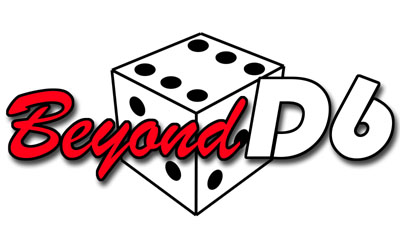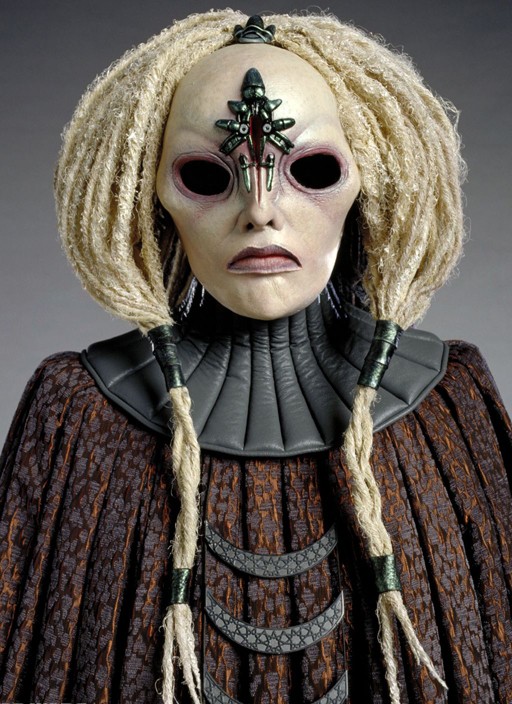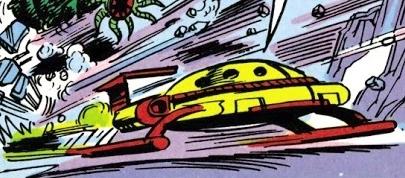 Name: Nosaurian
Designation: Sentient
Classification: Reptile
Average height: 1.35ââ¬â1.5 meters
Average mass: 75 kilograms
Skin color: Red, orange, yellow, green, blue, brown, white, gray, black
Feather color: Same color as scales (fall out at adolescence)
Eye color: Pink, yellow, white, brown, gray
Distinctions: Horns, luminescent mouth lining
Average lifespan: 100 standard years
Homeworld: New Plympto
Language: Nosaurian
Attribute Dice: 12D
DEX: 2D/4D+1
KNO: 1D/4D
MEC: 2D/4D+1
PER: 1D/3D+2
STR: 1D/3D+2
TEC: 1D/4D
Special Abilities:
Horns: Nosaurians possess six horns on the tops of their heads that they can employ as weapons. Goring an opponent with these horns inflicts the Nosaurian's Strength +1 in damage.
Internal Clock: Nosaurians attuned to the planet they are living on instinctively know when the sun is setting. They usually accompany the setting sun by braying at the top of their lungs. This is largely involuntary, and any Nosaurian wishing to resist the urge to "sing it [the sun] down" must succeed at a Very Difficult Willpower skill roll.
Story Factors:
Color Blind: Nosaurians only see in black and white. While they are not typically effected by this, they may have difficulty interpreting color-coded computer displays or vehicle controls that they are unfamiliar with.
Phosphorescent Mouth Lining: A Nosaurian can make the lining of his mouth phosphorescent at will. Although many animals on New Plympto use similar abilities to attract prey, it grants no appreciable bonus to Nosaurian characters.
Resentful of Humans: Nosaurians blame Republic politicians (and humans in general) for financial problems suffered on their homeworld of New Plympto. These feelings were further compounded by a heavy-handed Imperial subjugation of their planet.
Move: 10
Description: The Nosaurians were a sentient, bipedal, reptilian species native to the planet New Plympto in the Core Worlds. A Nosaurian was easily recognized by a row of long horns, a covering of tough scales, and a beakful of sharp teeth. Members of the species had the ability to produce a brief flash of light from inside their mouths, a knack they used for silent, long-distance communication. Nosaurians were colorblind, although few found this bothersome.
Their language's phonemes consisted of hisses, barks, and warbles, and its syntax commonly used metaphors related to weather, nature, and the seasons. They were capable of speaking Basic yet generally chose not to. When on their homeworld, they had an inexplicable ability to tell when the sun was setting and an overwhelming urge to "sing it down" by braying. This behavior persisted offworld, but the disturbance in a Nosaurian's internal rhythms often brought it on at inopportune times with no real tie to New Plympto's dayââ¬ânight cycle.
Nosaurians were naturally even-tempered. However, a long history of what they viewed as marginalization and exploitation at the hands of Humans left them bitter and angry. This began soon after the Nosaurians met their first offworlders, the Corellians. These Human neighbors became enmeshed in New Plympto's trade of rikknit eggs, a valuable component in ji rikknit and other recreational substances. As the rikknit population on New Plympto plummeted and the Galactic Republic imposed sanctions on the trade, the economy crumbled. The Nosaurians saw little choice but to join the Confederacy of Independent Systems. After the group's defeat in the Clone Wars, the Nosaurians tried to carry on the fight, only to be crushed by the 501st Legion and enslaved by the Galactic Empire. Decades later, when they opposed an invasion by beings known as Yuuzhan Vong, the aggressors unleashed a deadly virus on their homeworld and rendered it uninhabitable.
Nosaurians who made their names on New Plympto included the resistance leaders General Rootrock and Fefar Blackeye. However, economic hardship and enslavement forced many Nosaurians to emigrate over the centuries. Some gravitated toward thrill-seeking professions, as exemplified by the podracer pilot Clegg Holdfast. Others drifted among the galactic fringe, as in the case of Bomo Greenbark, who left his homeworld searching for his family after the end of the Clone Wars.
Biology and appearance
The Nosaurians were a species of sentient bipedal reptiles who stood slightly shorter than the average Human at 1.2 to 1.55 meters. They had lithe, long arms and short legs in proportion to their bodies. Each hand featured three or four fingers and an opposable thumb, and each birdlike foot three forward-pointing toes; some members of the species had a fourth, backward pointing toe as well. All of these digits sported sharp claws. Nosaurian musculature was similar to that of a Human. Their hides were tough and covered in scales. Light green to black pigmentation was most common, but other scale colors included blue, green, yellow, orange, red, brown, white, gray, and black. Nosaurians often had markings of another hue such as a lighter belly and chin or a mask about the eyes. Members of the species were nimble acrobats with acute combat reflexes. The average Nosaurian weighed 75 kg.
One trait that distinguished Nosaurians from other reptilian species was a crest of horns that grew atop their heads. Most members of the species displayed six bony spikes of varying lengths, although children could have fewer, and some adults had many more, often growing on the back of the skull as well. These horns were quite strong; the Nosaurian Bomo Greenbark once broke chains over his head spikes, and members of the species used their spikes as defensive impaling weapons. Nevertheless, they were not indestructible, and Nosaurians often wore protective gear to prevent horn damage. The older and more pugnacious the Nosaurian, the more likely he or she was to have suffered a broken horn. Some individuals featured hornlike protrusions on other parts of the body, including the cheeks, chin, knees, and shoulders.
A pair of small eyes lay below the horns. The sclera and iris could be of any number of colors, including pink, yellow, white, brown, and gray. The species saw only in black and white, although they typically learned to distinguish the subtle differences of what other species perceived as color, at least much of the time. Nevertheless, this monochromatic vision sometimes led to problems interpreting technological devices such as datapad screens that assumed the user had color vision.
A long, beaklike snout full of sharp teeth and perforated by two nostrils was another distinctive Nosaurian facial feature. The lower canines sometimes protruded from the mouth even when closed. Nosaurians had the ability to light up the lining of their mouths at will. The resulting flash was bright enough to briefly illuminate a room and even blind someone, but it could not be sustained for long.
Nosaurian children were covered in a coat of downy feathers of the same color as their scales. As the Nosaurian aged, these feathers fell out, lingering latest on the head and elbows. During adolescence, beginning at age 11, the remaining feathers molted, leaving the Nosaurian bald by age 13. Nosaurians entered adolescence between the ages of 11 and 15 and were considered adults at 16. On average, they lived to be a standard century old. Most members of the species wore clothing as a matter of habit, and females sometimes hung long, diaphanous ribbons from their horns.
Society and culture
Among friends, Nosaurians were perceived as cool-headed and congenial. To outsiders, however, they were known to disdain Humansââ¬âand, to a lesser extent, other speciesââ¬âfor what the reptilians considered a history of mistreatment. This attitude began in the days of the Old Republic and festered and deepened under the regime of the Galactic Empire. By the time the Yuuzhan Vong War broke out in 25 ABY, Nosaurians still had a reputation for surliness and hotheadedness from outsiders. The despoliation of their planet during that conflict deepened this sullen humor and plunged many Nosaurians into a miasma of hopelessness and dismay.
Nosaurians tended to live in the mossy, coastal swamps of their homeworld. Their population fluctuated with the times. New Plympto was home to some one billion Nosaurians in the days of the Old Republic, but this number dropped to a mere 20 million after the Clone Wars. Under Imperial occupation, the numbers fell to 7 million.
The species was divided into clans. Some of these lived in isolated villages, while others banded together to create city-states, the highest form of government on the world. The city of Phemiss was considered the planetary capital. Nosaurian cities featured domed, earthen homes with rounded entrances and window-bearing turrets. These buildings were typically amassed into rings that centered on a shared courtyard used for communal feasting and child-rearing. Although these arrangements made Nosaurian cities feel disorganized and difficult to navigate to offworlders, Humans made up 4% of New Plympto's population, and most cities featured offworlder districts that followed a layout more familiar to non-Nosaurians.
The Nosaurians relied on outside traders for much of their food, communications gear, high technology, and weapons. In exchange, they offered simple products and their world's major export, the eggs and ovum sacs of a native species of crustacean known as the rikknit. These eggs were a component in the production of several intoxicating substances, including the spice known as ji rikknit.
Upon molting his or her down feathers, a Nosaurian typically apprenticed to a master from his or her clan for a few years to learn a trade. Many Nosaurians took up mundane vocations such as candlemaking, fishing, or piloting local transports known as swoopshaws. Others took darker-tinged occupations such as raiding. A few Nosaurians were clanless, and thus outcasts in Nosaurian society. Xant Flashheel, for example, operated from Phemiss and took risky jobs to make ends meet. Many others relied on the rikknit trade or rikknit hunting for their living. Rikknit harvesters became experts at arboreal locomotion, climbing trees using crampons known as tree-claws and brachiating to get into position. They then spread a net a few meters below a rikknit nest. Bracing themselves in place, the hunters used a sharp harvest blade to cut the food caches and slit the ovum sac of the rikknit above. When done properly, this harvesting did not kill the animal. Nevertheless, rikknits could and did fight back, so rikknit harvesters learned to fight skillfully despite the staggering heights, bracing themselves against the tree bark with their foot claws. Their harvest tools doubled as deadly weapons, and even a few non-Nosaurians used them for combat purposes. Some Nosaurian harvesters worked illegally; Glarc Leapfar was one of the more successful rikknit poachers and the leader of a group who operated in a forest called the Hajial Chase; nevertheless, his group made efforts to harvest rikknit eggs sustainably.
Marriages were monogamous and typically arranged by the partners' clans. Young males sparred with one another in public bouts of head-butting to prove their physical prowess and, they hoped, their desirability to the clans of unmarried females. Members of the species could form fierce bonds with their mates and their families; the Nosaurian Bomo Greenbark traveled to three different worlds to track down his wife and daughter, who had been sold into slavery after the Empire took control of New Plympto.
Nosaurians were proud of their culture and conscious to keep their old ways alive. They were not afraid to fight to protect that which they valued and could be determined combatants when provoked. A Nosaurian could turn claws, horns, and teeth against an adversary, and young males were known to cross horns with rivals in a skull-bashing display of dispute resolution. In times of war, Nosaurian forces employed everything from simple axes, force pikes, knives, and polearms to advanced blasters. Their armies used guerrilla tactics: they kept to jungles, subsisted on locally available substances like nectar, communicated silently over long distances using mouth flashes, and set up only temporary camps of dome-like tents. They were not beyond torturing prisoners of war.
The Nosaurian voice was typically high-pitched and twittering, and spoken Nosaurian sounded like a chorus of musical hisses, trills, tweets, and warbles. Nevertheless, their vocal tone dropped into bass, coarse honks, and woofs when angry, disturbed, or upset. The written form of the language employed two separate alphabets that could be used in conjunction and relied on metaphors and imagery related to nature, the seasons, and the weather. Nosaurian morphology allowed the species to speak Basic; most Nosaurians knew the language, but preferred to avoid it due to its Human associations. A typical Nosaurian had both a personal name and a clan name. Personal names tended to be non-Basic terms, such as the masculine names Bomo, Clegg, Fefar, and Moco; and the feminine names Mesa and Resa. Clan names, on the other hand, were often compounds of two Basic terms. Examples included Blackeye, Farlock, Flashblade, Fishgather, Greenbark, Holdfast, Leafhorn, Leapfar, Limbfree, Minkfruit, Riverwander, Rootrock, Seawatcher, Sunsinger, and Tallmeadow.
Nosaurians retained an ingrained trait from their evolutionary past. When on their homeworld, twilight triggered the overwhelming urge to "sing down the sun." Although the compulsion could be resisted, most Nosaurians brayed as loud as they could as day turned to night. The behavior was so ingrained that Nosaurians went through the nightly ritual even when indoors or out of sight of the sun. Nosaurians who left New Plympto did not lose the behavior, either, but their distance from their homeworld threw their internal rhythms off and resulted in their "singing" at strange, seemingly inexplicable times. This compulsion could all but counteract a Nosaurian's attempts at stealth; if the pursuers knew of the quirk, they could simply wait for the Nosaurian's vocalizing to give his or her location away.
History
Evolution and introduction to the greater galaxy
The Nosaurians were native to New Plympto, a verdant jungle planet on the outskirts of the Corellian sector near the border with the Deep Core. Although they themselves had little interest in questions of their own evolutionary origins, xenobiologists speculated that the species' forebears were predators who, like many carnivores on the world, used their luminescent mouths to attract prey such as insects. After evolving sentience, the Nosaurians organized themselves into competing clans and eventually city-states.
As early as 27,500 BBY, the Nosaurians had contact with the nearby Corellians, and at least one member of the species had left his homeworld and joined the galactic community by 25,000 BBY. However, not until about 10,000 years before the rise of the Galactic Empire did the species have regular relations with offworlders. These early visitors, traders from Corellia, visited the world and made contact. The Corellians named the Nosaurian homeworld after the Plympto system, a minor reach on the Corellian Trade Spine hyperlane. New Plympto itself became a part of that trade route, located on it between the planets Jumus and Duro, and Nosaurians spread along the trade lanes of the Corellian sector. Nevertheless, the world was only marginally integrated into galactic society, being far off the path of most visitors to the Core.
With the introduction of galactic technology and trade came the Nosaurians' entrée into galactic government. Although the species joined the Galactic Republic, their debut began what would be a long chain of events that the Nosaurians interpreted as marginalization at the hands of Humans. For one, the world was placed under representation of the senator from the Corellian sector. When the Nosaurians petitioned the Republic for a representative from their own species, their request was denied. Second, the Republic chose to build its New Plympto consulate on the world's only natural satellite, Karsten Moon, rather than on the world itself. The world became caught up in galactic conflicts, falling briefly to Darth Revan's Sith Empire from 3959 to 3956 BBY, but remaining part of Republic space during the New Sith Wars of 1004ââ¬â1000 BBY.
Meanwhile, the Corellians seemed more eager to exploit New Plympto's resources, scant as they were, than to help develop its infrastructure and people; most Corellian investment into the world was limited to the purchase of the spice ji rikknit. The Nosaurian economy became increasingly dependent on the export of rikknit eggs and ji rikknit, and for centuries, this served as the only real engine of economic development. Some Nosaurian clans and city-states grew their wealth by participating in the trade, but Corellians rather than Nosaurians were the major beneficiaries of the industry. Unsustainable harvesting practices depressed the population of rikknits on the world, and by the administration of Republic Supreme Chancellor Finis Valorum, the impending extinction of the rikknit threatened the entire trade. Attempts to breed the crustaceans in captivity failed. Things came to a head when environmentalists pressured the Republic to outlaw the rikknit trade or, worse, took to sabotaging shipments and infrastructure. At one point, for example, the Ho'Din environmentalist Maki Salak attempted to poison a stash of ji rikknit before it could be shipped from Karsten Moon. Chancellor Valorum sided with the environmentalists; he approved a law that made rikknits a protected species, outlawed ji rikknit, forbade the export of rikknit eggsââ¬âand effectively turned almost all of New Plympto's Nosaurian population into criminals. New Plympto fell into a depression, and the Nosaurians pointed their fingers at the Republic and its invasive laws as the source of their troubles. Hundreds of thousands of Nosaurians fled their homeworld and settled on other Core Worlds.
The Clone Wars and the dark times
In 24 BBY, the Nosaurians were caught up in a chain of events that would alter their society drastically. In what came to be known as the Separatist Crisis, the rogue Count Dooku and his allies declared a Confederacy of Independent Systems (CIS), a government free and separate from the Galactic Republic. The CIS offered New Plympto membership and promised to recognize the legality of the rikknit trade. The Nosaurians saw little choice. They seceded from the Republic and declared themselves members of Dooku's new coalition.
When the Republic refused to recognize the Confederacy and the secession of its member worlds, the Clone Wars were officially declared. A hostile contingent of Republic clone troopers landed on New Plympto, led by a Jedi Master named Dass Jennir. Meanwhile, the Separatists bolstered the Nosaurian forces with battle droids. Nosaurian forces put up a stiff resistance to Jennir and his clone troopers in confrontations such as the Battle of New Plympto in 19 BBY, and his campaign against them led many Nosaurians to develop a hatred of the Jedi.
The war was ongoing when Palpatine declared himself Emperor and enacted the New Order in 19 BBY. After the defeat of the Confederacy, things grew worse: Palpatine turned his eye toward retribution against the Nosaurians for siding with the Separatists. The Nosaurians kept up their guerrilla war against the Republic-cum-Empire. Their former enemy, Dass Jennir, switched his allegiances when he found himself targeted by his former soldiers, the clone troopers. Without their droid allies, however, the Nosaurian resistance was a much weakened force. The Empire dispatched a brigade of clone troopers from the 501st Legion to crush them once and for all, and the Nosaurians and their Jedi ally knew theirs was a lost cause. In a last stand against the 501st, the Battle of Half-Axe Pass, the Nosaurian Commander Rootrock and his forces were wiped out. Nosaurian fighters who surrendered were summarily killed, while refugees trying to flee the worldââ¬âmostly women and childrenââ¬âwere rounded up and sold into slavery on Orvax IV. Despite his own misgivings about their enslavement, Darth Vader visited New Plympto to oversee the conquered planet.
Citing the species' "primitive" level of development and "undistinguished" culture, the Imperial Procurator of Justice added New Plympto to a list of "expendable" alien homeworlds and thus opened the door for the Empire to legally enter the world and extract any useful resources by force without concern for the native population. The Empire seized the world's money-making enterprises, razed entire city blocks in Phemiss to make way for more "orderly" construction, and commandeered the rikknit trade. It also continued to round up and sell countless Nosaurians as slaves, an example to other would-be opponents of the New Order. Those Nosaurians who had been offworld during the wars grew disillusioned when they felt pro-Human bias in the Core Worlds and the galactic government intensify.
The Nosaurians did not just lay down; in 1 BBY, they rose up against their Imperial overlords. The resistance organized and rallied behind the one-eyed General Fefar Blackeye. His forces employed guerrilla tactics and harassed the Imperials for two years in a vicious campaign. In 1 ABY, Blackeye found himself hemmed in by Imperial forces. At sundown, his sun-singing brays betrayed his location. He was captured, shipped to Coruscant, and placed in a cage at the zoo with a group of non-sentient primates. He lasted for six months before killing himself. Back on New Plympto, the resistance crumbled without him.
New Republic period
When the Empire fell at the Battle of Endor in 4 ABY and the New Republic was formed, New Plympto was once again able to communicate with the outside galaxy. News of General Blackeye's fate reached the species and strengthened their anger and resentment toward the Humans who seemed perpetually in charge of galactic affairs. The Nosaurians rejected overtures to join the new government, seeing little difference between the Humans of the New Republic and those who had come before. The world entered a period of isolationism during which the Nosaurians attempted to repair their devastated economy. Nevertheless, the world fell within Grand Admiral Thrawn's sphere of influence during the Thrawn campaign of 9 ABY.
In 18 ABY, the Corellian sector planet of Sacorria declared itself independent of the New Republic. New Plympto threw its allegiance behind the First Corellian Insurrection, and the New Republic declared war. The rebellion faltered and failed, and the Nosaurians once again found themselves on their own. With reluctance, they finally agreed to join the New Republic out of economic desperation. The New Republic enacted programs to rehabilitate the planet and its economy, which was still reeling from the Imperial occupation. Nevertheless, Nosaurian attitudes toward Humans barely budged. In 23 ABY, the world seceded once again to join the alien-friendly Diversity Alliance of the Twi'lek Nolaa Tarkona. Thousands of Nosaurian fighters joined the Diversity Alliance's armed forces to defend it against the New Republic before the Diversity Alliance was defeated.
In 26 ABY, shortly after the fall of neighboring Duro, New Plympto once again came under attack, this time from extragalactic beings known as Yuuzhan Vong. Many Nosaurians died in the initial invasion, and the world's defenses crumbled. The alien invaders used the world as an advance base for further incursions into the Corellian sector.
Like history repeating itself, the Nosaurians put up a stiff resistance. The Twi'lek Jedi sisters Alema and Numa Rar traveled to the world and helped lead the campaign. The resistance demolished Yuuzhan Vong biohatcheries, Shaper damuteks, and religious shrines, and received additional support from the New Republic; Kyp Durron, for example, ran supplies to the Nosaurian fighters, and spacers worked to smuggle Nosaurian refugees off the planet. After a year of unremitting harassment and disruption, the Yuuzhan Vong abandoned New Plympto in 27 ABY. They did not leave quietly, however, and unleashed a viral plague upon the planet that reduced almost 7 million Nosaurians into liquid goo and left the world unable to sustain life. The Rar sisters happened to be offworld at the time with a few thousand refugees escaping aboard ore freighters.
After the defeat of the Yuuzhan Vong in 29 ABY, the Galactic Federation of Free Alliancesââ¬âthe reconstituted New Republicââ¬âquarantined New Plympto. Decontamination experts visited the world and found nothing but a sea of liquefied, jelly-like biomass as deep as a Human's ankle. With no homeworld to go back to, Nosaurian refugees were resettled by the Galactic Federation of Free Alliances. New Plympto was later declared a memorial, along with other planets devastated by the war, such as Barab I and Ithor.
Nosaurians in the galaxy
A seemingly constant wave of economic downturns, wars, occupations, and fighting drove millions of Nosaurians to leave their homeworld over the years. Such Nosaurians often faced discrimination from others due to their reputation as troublesomeââ¬âespecially among Humansââ¬âand their habit of "singing down the sun" at seemingly random times while offworld. In fact, some restaurants and theaters denied service to Nosaurian customers for fear that the reptilians might disturb the other patrons with an unsolicited serenade. The first wave of Nosaurian emigration began soon after their introduction to the outside galaxy. Such expatriates might take any number of occupations: one was present at the Coruscant Livestock Exchange and Exhibition, for example. Another entered the Jedi Order and trained in the Corellian sector; his fellow trainee, Cope Shykrill, affected him with a sinister influence, which turned him against the other apprentices. After dispatching them, he slit his own throat. In 1032 BBY, during the Republic Dark Age, a Nosaurian mercenary worked as a gunnery leader under the command of the Human Jarrow Rusher. The Nosaurian and his companions were hired to fight for the Sith Lord Daiman during a battle on the planet Gazzari.
Those Nosaurians who left New Plympto of their own free will often made use of their keen reflexes and uncanny agility to become successful athletes and pilots. Many gravitated to the high-speed sport of podracing, foremost among them Clegg Holdfast. Although a journalist by trade, Holdfast took up podracing after a layoff from TriNebulon News. He hoped the experience would help improve the pieces he wrote for Podracing Quarterly. Although his podracer was top of the line, his driving prowess lagged behind his writing skills, and his fellow podracers never really respected him. Nevertheless, by personally participating in the races, Holdfast had access to insider gossip and gained a unique perspective that stood him above his peers in podrace journalism. In 23 BBY, Holdfast was still active, writing landspeeder reviews for HoloNet News.
During the Imperial occupation, Nosaurians spread throughout the galaxy as slaves. The more adventurous of those who escaped enslavement often took employment as mercenaries, soldiers, or scoundrels. Bomo Greenbark, for example, was a scout in the Nosaurian resistance who survived the initial Imperial assault and escaped offworld with Dass Jennir aboard the smuggler freighter Uhumele. Greenbark and his companions voyaged to Orvax IV, where they found that his wife, Mesa Greenbark, had been killed, and his daughter, Resa Greenbark, sold. They tracked his daughter to Esseles and mounted a rescue mission, only to discover that the slaveowner who had purchased her had eaten the girl. Jennir killed the man, and Greenbark parted company with him. Greenbark continued with the crew of the Uhumele, where he proved a strong and loyal fighter, if something of a loose cannon. As the crew's fortunes worsened without Jennir, Greenbark questioned whether ostracizing the Jedi had been the best moveââ¬âuntil a meeting with the Verpine Jedi Beyghor Sahdett on Kidron set Greenbark back on course to meet up again with Jennir. Meanwhile, Jennir went his own way, eventually traveling to the second moon of Telerath on the trail of a spice gang. There, he found Nosaurian and Chubbit slaves being held by the gang. Jennir dispatched the gang members he encountered and urged the slaves to escape in the gang's ships. Eventually reunited with Jennir, Greenbark supported a plan by Sahdett to target Darth Vader, but Jennir cited the enslavement of the Nosaurians as reason for caution. His misgivings proved well founded when Sahdett revealed he was working for the Empire to lure Jennir into a trap.
Nosaurians continued to be found in numerous positions throughout the galaxy after the establishment of the New Republic. For example, at least two were present on the planet Artorias when it was invaded by the Yuuzhan Vong in 25 ABY. Many years later, a female Nosaurian worked as an aide in Professor Eppington's department at the University of Sanbra in 27 ABY. The more adventurous among them sometimes worked as fringers or soldiers, especially during the Yuuzhan Vong War. After that conflict destroyed their homeworld, millions of Nosaurians roamed the galaxy.
|












